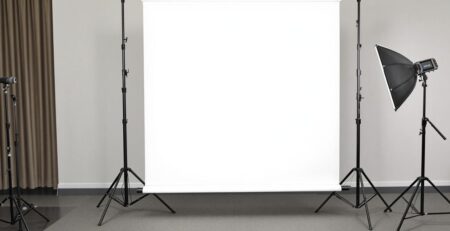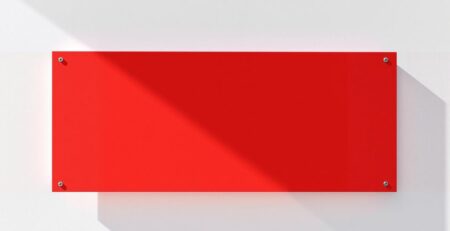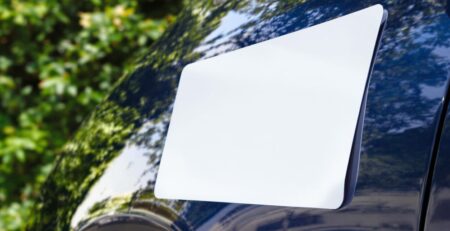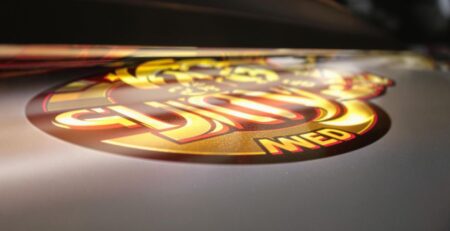The Ultimate Guide to Effective Sign Printing for Your Business
Getting the right signs for your business can make a big difference. It’s not just about putting up a picture; it’s about getting people to notice you and remember what you offer. This guide will walk you through everything you need to know about sign printing, from picking the right look to making sure your signs last a long time.
Key Takeaways
- Think about what you want your sign to do before you even start looking at designs.
- Good design means clear words and colors that pop, so people actually see your sign.
- Picking the right material for your sign is super important for how long it will last.
- Where you put your sign matters a lot for how many people see it.
- Knowing a bit about how signs are made helps you get a better final product.
Understanding Your Signage Needs
Identifying Your Business Goals for Signage
Signage is more than just decoration; it’s a strategic tool. Clearly defined business goals are the foundation of effective signage. What are you trying to achieve? Are you looking to increase foot traffic, boost brand awareness, or promote a specific product or service? Knowing your objectives will guide your signage choices and ensure they contribute to your bottom line. By setting measurable goals, you can track the success of your signage and make adjustments as needed. What key performance indicators (KPIs) will you use to measure success?
Choosing the Right Sign Type for Impact
Selecting the right type of sign is crucial for maximizing impact. There are many options, from storefront signs and banners to window clings and vehicle wraps. Consider the location, visibility, and message you want to convey. A-frame signs are great for attracting sidewalk traffic, while illuminated signs can grab attention at night. Think about the overall aesthetic and how it aligns with your brand. Which sign type best suits your needs and budget?
Assessing Your Target Audience and Location
Understanding your target audience and location is key to effective signage. Who are you trying to reach, and where are they located? Consider demographics, traffic patterns, and local regulations. A sign that resonates with one audience might not work for another. Similarly, a sign that’s effective in a busy downtown area might be overkill in a quiet residential neighborhood. Tailoring your signage to your audience and location will increase its impact and effectiveness. How can you best reach your ideal customer with your signage?
Designing for Maximum Visual Impact
Crafting Compelling Signage Messages
Your signage message is the first impression you make, so make it count. A clear and concise message ensures potential customers understand your offering at a glance, ultimately driving more foot traffic. What key information do you want customers to remember?
Effective signage tells a story, and it should be a story that resonates with your target audience. Think about the benefits you offer and translate them into compelling statements, which will help you connect with potential customers on an emotional level. How can you make your message unforgettable?
Consider using a strong call to action to prompt immediate engagement. Whether it’s "Visit Us Today!" or "Shop Our Sale!", a clear call to action encourages customers to take the next step, boosting your sales. What action do you want your audience to take?
Selecting Effective Colors and Fonts
Color psychology plays a significant role in how your signage is perceived, so choose wisely. Bright colors like yellow and red can attract attention, while cooler tones like blue and green evoke trust and stability, influencing customer perception. What emotions do you want to evoke with your sign printing?
Font choice impacts readability and brand perception, so select fonts that are easy to read from a distance. A clean, sans-serif font is often best for quick readability, while a more decorative font can add personality, enhancing your brand’s image. Does your font reflect your brand’s personality?
Contrast is key to ensuring your message stands out, so use high-contrast color combinations. Dark text on a light background or vice versa will make your signage pop, improving visibility and recall. How can you maximize contrast for better visibility?
Incorporating Your Brand Identity
Consistent branding builds recognition, so ensure your signage reflects your brand’s visual identity. Use your logo, brand colors, and fonts consistently across all signage, reinforcing brand recognition. How can you create a cohesive brand experience?
Your logo should be prominently displayed, but not overwhelming, on your signs. A well-placed logo reinforces brand recognition and helps customers easily identify your business, increasing brand awareness. Where is the best place to put your logo?
Consider the overall aesthetic of your brand when designing your signage. A cohesive design that aligns with your brand’s values and personality will create a professional and trustworthy image, building customer confidence. Does your signage reflect your brand’s values in Cerritos?
Material Selection for Durable Sign Printing

Exploring Vinyl Banner Options for Longevity
Vinyl banners are a popular and cost-effective signage solution, but choosing the right type is key for longevity. Consider the thickness of the vinyl; a heavier weight, like an 18oz vinyl banner, will withstand wear and tear better than a lighter one. For outdoor use, look for banners with UV protection to prevent fading and cracking, ensuring your message stays vibrant for longer. What banner weight and finish best suits your needs and budget?
Considering Weather Resistance for Outdoor Signs
Outdoor signs face a constant barrage of the elements, so weather resistance is paramount. Factors like rain, wind, and sun can quickly degrade inferior materials. Opt for materials specifically designed for outdoor use, such as aluminum or treated wood, and consider protective coatings to extend the life of your signage. Are you prepared to invest in weather-resistant materials to avoid frequent replacements?
Matching Materials to Your Specific Application
The best sign material depends heavily on its intended use and location. For example, a temporary indoor sign might only require a lightweight foam board, while a permanent outdoor sign needs a more robust material like aluminum composite. Think about the sign’s purpose, its exposure to the elements, and the desired lifespan to make the right choice. What are the specific requirements of your signage project, and how do they influence your material selection?
Choosing the right material is an investment in your brand’s image and longevity. Selecting durable materials reduces the need for frequent replacements, saving you money in the long run and ensuring your message remains clear and impactful.
Optimizing Sign Placement and Visibility

Strategic Positioning for Foot Traffic
Effective sign placement is all about location, location, location. Consider where people are most likely to see your sign, such as near entrances, exits, or high-traffic areas. This ensures your message reaches the maximum number of potential customers, boosting brand awareness and driving sales. Think about how you can use building signs to attract more customers.
Ensuring Clear Visibility from a Distance
Sign visibility is key to attracting attention. Make sure your sign is large enough and positioned so it can be easily seen from a distance, free from obstructions like trees or other buildings. This allows potential customers to read your message and find your business without difficulty, increasing foot traffic and sales. What steps can you take to improve your sign’s visibility today?
Navigating Local Signage Regulations
Understanding local signage regulations is crucial for compliance. Research local ordinances regarding sign size, placement, and permits to avoid fines and legal issues. By adhering to these rules, you ensure your signage is both effective and compliant, protecting your business from unnecessary penalties. Are you up-to-date on the latest signage regulations in your area?
The Sign Printing Process Explained
Preparing Your Artwork for Professional Printing
Getting your artwork ready is the first crucial step in sign printing. High-resolution images and vector graphics are essential for a crisp, professional finish. Make sure your files are in the correct format (like PDF or AI) and include bleed areas to avoid white edges after cutting. Are you ready to see your vision come to life with a perfectly prepared design?
Understanding Different Printing Technologies
Various printing technologies exist, each with its own strengths. From large format inkjet printing for vibrant banners to UV printing for durable outdoor signs, the choice depends on your specific needs. Consider the pros and cons of each method, such as solvent, eco-solvent, latex, and dye-sublimation, to achieve the best results for your step and repeat backdrop banner. Which technology aligns best with your project’s requirements and budget?
Quality Control in Sign Production
Quality control is paramount throughout the sign printing process. This involves checking color accuracy, image sharpness, and material integrity. A reputable printer will have systems in place to catch any errors before the final product reaches you. Are you confident that your chosen printer prioritizes quality at every stage?
Cost-Effective Sign Printing Solutions
Budgeting for Your Signage Investment
Smart budgeting is key to getting the most out of your signage. Start by defining your goals and prioritizing which signs will have the biggest impact. Research different sign printing options and materials to find the best balance between cost and durability, ensuring you get the most value for your money.
Finding Affordable Sign Printing Services
Locating affordable sign printing doesn’t mean sacrificing quality. Look for local print shops that offer competitive pricing and discounts for bulk orders. Compare quotes from multiple providers and ask about available options to reduce costs, such as using standard sizes or simpler designs. This way, you can secure the best deal without compromising on the effectiveness of your signage.
Maximizing Your Return on Signage
To truly maximize your return on signage, focus on strategic placement and clear messaging. Well-placed signs that grab attention and communicate your message effectively will attract more customers. Track the impact of your signs by monitoring foot traffic and sales, allowing you to refine your strategy and ensure your signage investment pays off. Consider using custom t-shirts custom t-shirts to promote your business in a cost-effective way.
Investing in high-quality, well-designed signs is an investment in your business’s future. By carefully planning your budget, finding affordable printing services, and optimizing your signage strategy, you can achieve a significant return on investment and drive business growth.
Here’s a simple table to illustrate potential cost savings:
| Feature | Standard Printing | Affordable Printing | Savings |
|---|---|---|---|
| Material | Premium Vinyl | Standard Vinyl | 15% |
| Design Complexity | Custom Design | Template Design | 20% |
| Order Quantity | Small Batch | Bulk Order | 10% |
Consider these points when looking for affordable options:
- Negotiate prices with local print shops.
- Opt for standard sizes to avoid custom cutting fees.
- Design your signs with longevity in mind to reduce replacement costs.
Maintaining Your Business Signage
Best Practices for Sign Cleaning
Regular cleaning is key to keeping your signs looking their best. Dirt, grime, and environmental pollutants can dull your signage, making it less effective. Use a soft cloth and mild soap to gently clean your signs, avoiding harsh chemicals that can damage the materials. This simple step extends the life of your investment and ensures your brand always makes a positive impression.
Protecting Your Signs from Wear and Tear
Protecting your signs from the elements is crucial for longevity. Consider applying a protective coating to vinyl banners to shield them from UV rays and moisture. For outdoor signs, regular inspections can help identify and address minor damage before it escalates. What preventative measures can you take to safeguard your signage and maintain its visual appeal?
When to Consider Sign Replacement
Knowing when to replace your signage is essential for maintaining a professional image. Signs that are faded, damaged, or outdated can negatively impact your brand perception. Evaluate your signage regularly and consider replacement when it no longer effectively represents your business. Is it time to refresh your signage to attract new customers and reinforce your brand identity?
Keeping your business signs looking good is super important! A clean, well-kept sign tells everyone that your business is careful and pays attention to details. If your sign looks old or broken, people might think your business is the same way. Make sure to clean your signs often and fix any problems right away. Want to learn more about making your signs last? Check out our website for tips on how to keep your signs in top shape!
Wrapping Things Up: Your Signs, Your Success
So, there you have it. Getting your sign printing right isn’t just about picking a color and hoping for the best. It’s about making smart choices that really help your business stand out. Think about what you need, what your budget is, and what kind of vibe you want to give off. When you put some thought into your signs, they can do a lot of heavy lifting for you, bringing in new customers and keeping the old ones happy. Good signs just make everything easier, you know? They tell people who you are and what you’re all about, without you having to say a word. It’s pretty cool when you think about it.
Frequently Asked Questions
What kind of sign is best for my business?
The best sign for your business depends on what you need it for. For outdoor use, like grand openings or sales, vinyl banners are a great choice because they’re tough and can handle different weather. For inside, like a lobby or trade show, fabric banners can look really nice and professional. Think about where the sign will go, how long you need it, and what message you want to send.
How can I make my sign look good and get noticed?
To make your sign stand out, use clear and simple words. Pick colors that grab attention but are also easy to read. Make sure your business logo is on it so people know it’s yours. A good design makes your sign memorable and helps people understand your message quickly.
What materials are good for outdoor signs?
For signs that will be outside, you need materials that can stand up to sun, rain, and wind. Heavy-duty vinyl is often used because it’s strong and lasts a long time. For signs that need to let wind pass through, like on a fence, mesh banners are a good option. Always tell your printer if your sign will be outdoors so they can suggest the best materials.
Where should I put my sign so people see it?
The best spot for your sign is where lots of people will see it. If you’re near a busy street, make sure it’s big enough to read from far away. If it’s for people walking by, place it at eye level. Also, check with your city or town about any rules for signs, like how big they can be or where they can be placed.
What happens during the sign printing process?
When you’re ready to print, make sure your design file is high-quality. This means the pictures and words should be clear and not blurry. Talk to your printer about the best file type to send. They use special machines to print your design onto the sign material, and they’ll check everything to make sure it looks perfect before it’s finished.
How do I take care of my business signs?
To keep your signs looking new, clean them gently with a soft cloth and mild soap and water. Try to keep them out of very harsh weather if possible, and store them rolled up, not folded, when you’re not using them. If a sign gets very worn out or damaged, it’s probably time to get a new one to keep your business looking its best.











